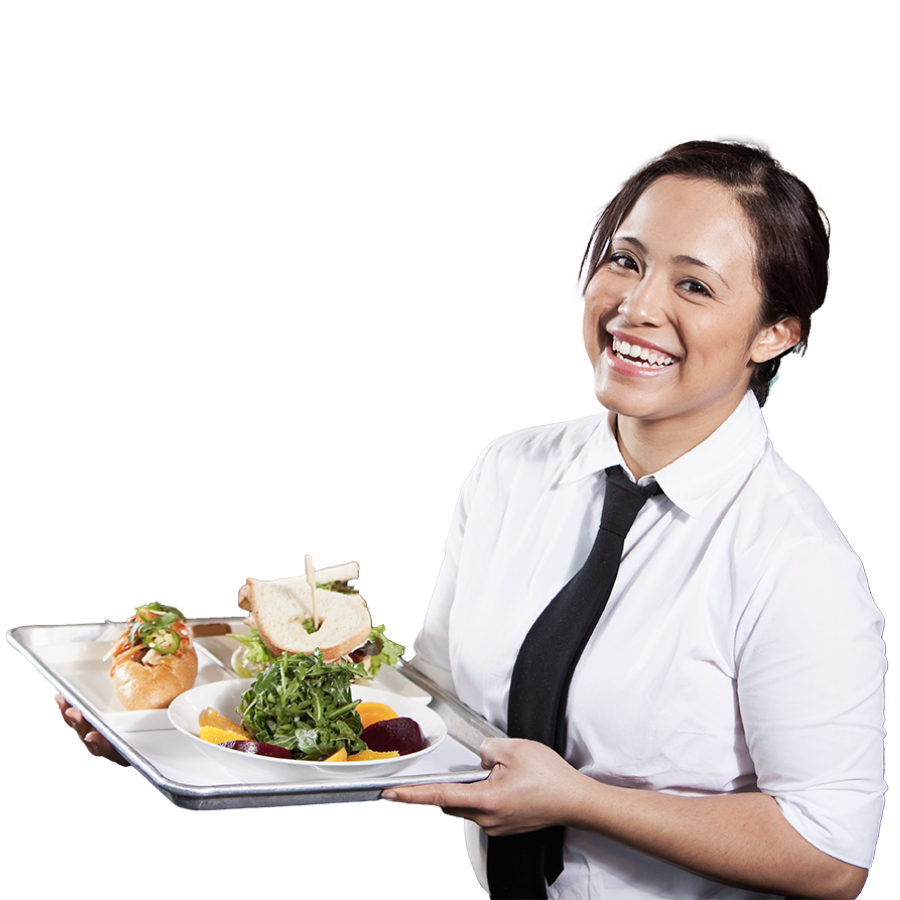In November 2024, the U.S. Food and Drug Administration (FDA) released a Supplement to the Food Code 2022, introducing significant updates to enhance food safety practices in retail and food service establishments.
One of the key additions was the introduction of comprehensive disinfection requirements, which emphasize the importance of disinfecting surfaces and utensils when sanitization alone is insufficient. For food service businesses, understanding and implementing this new requirement is critical for preventing the spread of harmful pathogens, ensuring customer safety and meeting legal obligations.
Read on to learn more about cleaning, sanitizing and disinfecting—a topic covered in both Userve’s Food Handler and Food Protection Manager courses.
What Is Disinfecting?
According to the November 2024 Food Code Supplement, disinfecting involves using a substance, or mixture of substances to destroy or irreversibly inactivate bacteria, fungi and viruses. This definition distinguishes disinfecting from sanitizing by outlining its role in situations where standard sanitizers may not suffice.
- Purpose: Eliminate pathogens of concern, especially in scenarios where higher antimicrobial efficacy is needed (e.g. Healthcare settings).
- Tools/Products: EPA-registered disinfectant products, including sprays, powders, wipes and liquids.
- Step in Process: Performed after cleaning and, in certain cases, after sanitizing.
- Effectiveness: Kills most pathogens, offering an enhanced level of surface safety.
Unlike cleaning, which removes visible dirt, and sanitizing, which reduces pathogens to safe levels, disinfecting aims to eliminate harmful microorganisms entirely when sanitizers cannot sufficiently control them.
Comparison: Cleaning, Sanitizing and Disinfecting
| Cleaning | Sanitizing | Disinfecting | |
| Purpose | Removes dirt and organic matter | Reduces pathogens to safe levels | Kills or inactivates harmful pathogens |
| When to Use | Before sanitizing or disinfecting | After cleaning food-contact surfaces | After cleaning, when sanitization is insufficient |
| Products Used | Detergents and water | EPA-registered sanitizers | EPA-registered disinfectants |
| Regulation | Not EPA-regulated unless sanitizing | EPA-regulated | EPA-regulated |
Why is Disinfecting Now a Requirement?
To address scenarios requiring stricter microbial control, the FDA has introduced a new Food Code section—Part 4-10, 'Disinfection of Equipment and Utensils'—which outlines when disinfection is required and the methods to be followed.
When Disinfecting Is Required
Disinfecting is required when equipment, food-contact surfaces, nonfood-contact surfaces and utensils are contaminated with bodily fluids, such as blood, that can transmit disease. Additionally, disinfection is required during a foodborne disease outbreak or when an imminent health hazard is identified.
Approved Disinfecting Methods
Disinfecting must be performed using EPA-registered disinfectants, following the manufacturer's label instructions. For food-contact surfaces, it is often required to rinse the disinfected area with potable water after observing the advised contact time, unless otherwise specified on the label.
The Food Code Supplement highlights specific situations where disinfecting is required, signaling its importance in minimizing risks during operations where sanitization may fall short.
How to Disinfect Your Workplace Effectively
1. Use EPA-Registered Disinfectants
Ensure all disinfectants are approved by the Environmental Protection Agency (EPA). The EPA regulates these products to meet safety and efficacy standards. Look for the EPA registration number on product labels and follow usage instructions carefully, including:
- Recommended contact time for the product to be effective.
- Any rinsing requirements (e.g. rinsing with potable water after disinfecting food-contact surfaces).
- Dilution guidelines (if applicable)
2. Understand the Process
- Step 1 - Cleaning: Remove visible debris, grease and dirt with soap or detergent and water.
- Step 2 - Disinfecting: Apply the EPA-registered disinfectant to kill or inactivate harmful pathogens.
- Step 3 - Rinsing: Follow the label instructions for rinsing disinfected surfaces to prevent residue buildup. (Note: Some disinfectants do not require rinsing after use.)
3. Train Staff
Educate your team on the differences between cleaning, sanitizing and disinfecting. Ensure they understand:
- The scenarios where disinfecting is required.
- Safe handling and use of disinfectants.
- The importance of following label instructions for safe and effective use.
Cleaning, sanitizing and disinfecting is a topic covered in both Userves’s Food Handler and Food Protection Manager courses.
Best Practices for Compliance
- Follow Food Code guidelines: Always align cleaning, sanitizing and disinfecting procedures with the most current version of the Food Code.
- Use approved products: Ensure all disinfectants are EPA-registered and are suitable for your facility's needs.
- Document procedures: Maintain records of cleaning, sanitizing and disinfecting schedules to demonstrate compliance during inspections.
- Be proactive: Regularly review your processes and adapt to any updates in food safety regulations.
Enroll With Userve for a Better Understanding of Cleaning, Sanitizing and Disinfecting
Userve’s comprehensive Food Handler and Food Protection Manager programs each have a section dedicated to cleaning, sanitizing and disinfecting protocols. Enroll online today to gain the knowledge and skills required for food safety compliance and to protect public health.
Want to learn more before enrolling? Get in touch with a member of our team, they will be happy to help.

